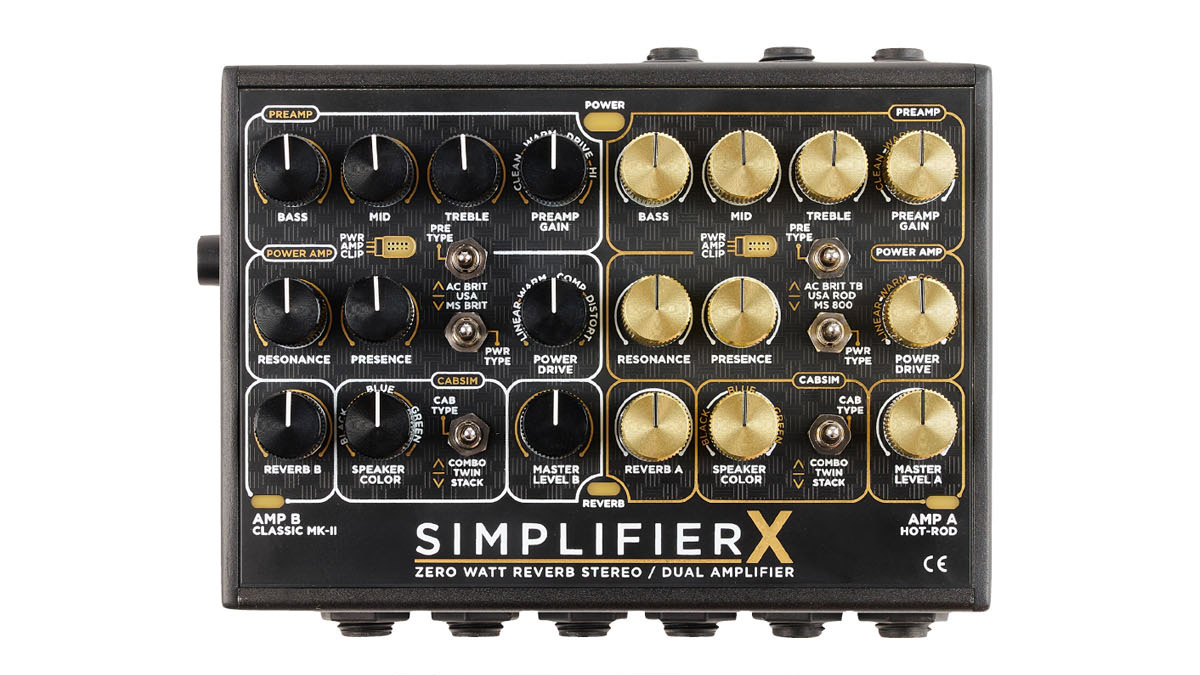“The most advanced analogue amp simulator ever made”: DSM Humboldt launches the Simplifier X, a compact solution for running a full stereo rig without an amp
The evolution of the zero-watt amplifier continues with the Simplifier X offering cab sims, reverb, multiple preamps, and three different ways of running your "amp-less" rig in stereo

DSM Humboldt has unveiled the Simplifier X, the latest update to its analogue “zero-watt” guitar amplifier and cab sim unit, which now comes with even more features, including full stereo capability and a suite of options for players looking for a fully featured amp solution minus the amp.
Indeed, that’s how the Simplifier X is billed – “the ultimate amp-less solution” – and there is plenty of evidence here to back that claim up. It’s also (largely) a digital free zone. There is a stereo digital reverb, complete with a mix control for each channel, but it keeps these room, plate and ether-style reverbs sidechained out of the way.
So if you are looking for an oasis from the proliferation of touchscreens and libraries of app-editable presets, this might be more your speed.
There are no menus. DSM Humboldt promises “zero latency” from the analogue design. Everything is arranged much like an amplifier, with two amp blocks across two channels A and B, each with three preamp voicings apiece, with Amp A controlled by gold metal knobs, Amp B by black knobs. Amp A is the Hot-Rod side of the pedal, with switchable AC Brit TB (think ‘60s VOX AC-30 Top Boost), USA Rod and MS800 (based on the Marshall JCM800) voicings.
Meanwhile, Amp B, aka the Classic MkII side, has the Vox-ish AC Brit, USA (based on a ’59 Bassman) and MS Brit voicings – the latter for all your Plexi needs.

There are three modes you can use these amplifier sounds. You can run the amps in full parallel, as though they were two completely different amplifiers that you happened to have running at the same time, which means you can then simply set each amp however you like and then build a full stereo rig out of the pair of them
Alternatively, you can A/B the amplifiers, toggling between the two while the cabinet and effects loop panned left and right, allowing you use different cabinets and effects on either side of the mix, using the different sounds to complement each other.
Want all the hottest music and gear news, reviews, deals, features and more, direct to your inbox? Sign up here.
And there is a dual mono mode that, again, treats each amplifier as though they are completely different, and you are switching them in and out with an A/B switch, allowing you to switch up your effects, and select them by changing the channels, with a footswitch available for changing these sounds on the fly.
The Simplifier X has plenty of connectivity options. There are dual XLR DI outputs with groundlift. There are a pair of 1/4” outputs with a cab sim bypass switch so you can use a real cabinet, a Thru jack for dedicated dry amp signal path, and a headphones output with level.
As with previous editions of the Simplifier, the enclosure is built tough. It’s made from anodised aluminium and comes in a sandblasted frosted black finish. Priced £/$499, the Simplifier X is available now. See DSM Humboldt for more details.
Jonathan Horsley has been writing about guitars and guitar culture since 2005, playing them since 1990, and regularly contributes to MusicRadar, Total Guitar and Guitar World. He uses Jazz III nylon picks, 10s during the week, 9s at the weekend, and shamefully still struggles with rhythm figure one of Van Halen’s Panama.
